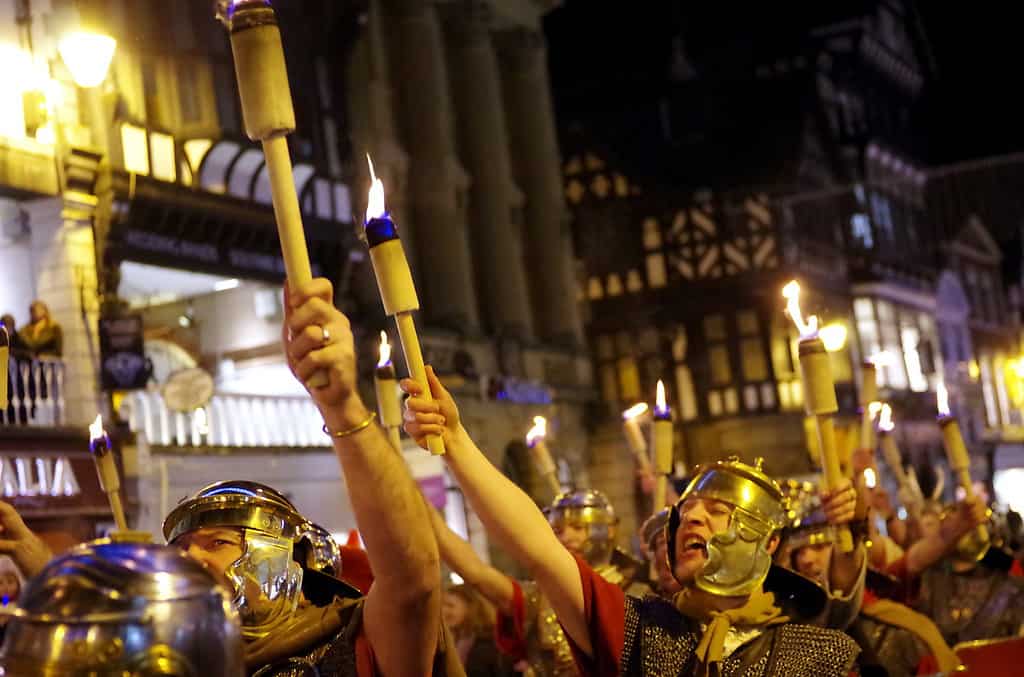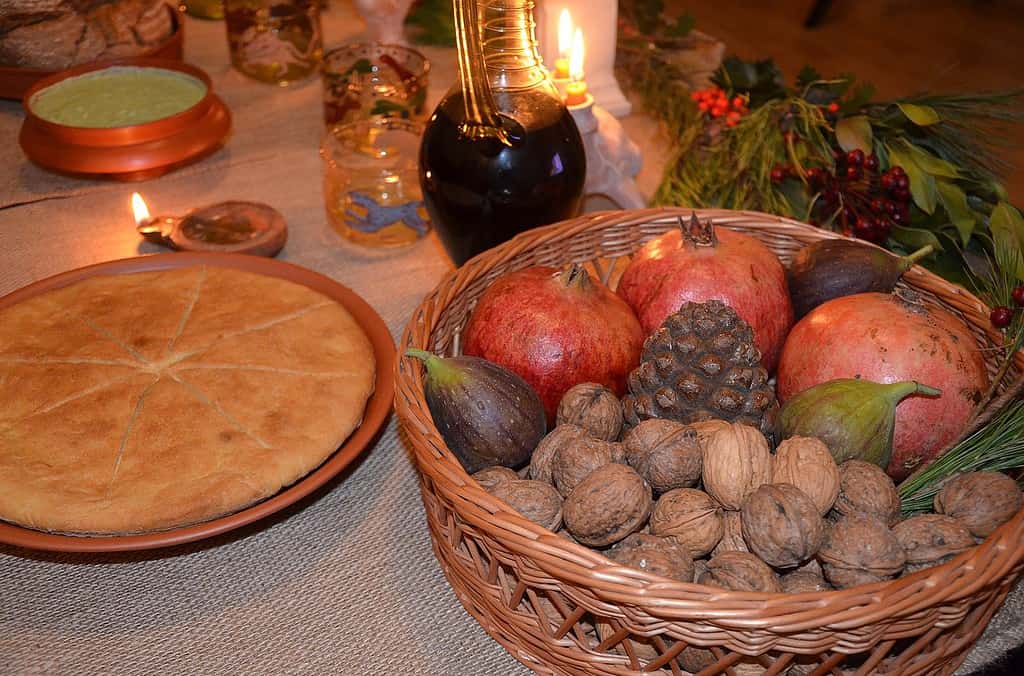
The festive season of December, marked by the celebration of Christmas, is cherished by billions of people worldwide. We partake in the joyous custom of exchanging gifts with loved ones, gather around tables adorned with hearty meals, and decorate our homes with wreaths and shimmering Christmas trees. This warm and celebratory tradition recurs annually, ingrained as a staple in the calendar of countless families.
But did you know that the tale of Christmas probably goes back to the ancient city of Rome?
Yep, without the Saturnalia festivities in ancient Rome, Christmas as we know it would look very different nowadays, or perhaps wouldn’t exist at all. Here’s why.
What is Saturnalia?
Saturnalia, an ancient Roman festival, was initially celebrated on December 17. It honored Saturn, the Roman god of agriculture and time. It gradually evolved into a week-long festive celebration.
Saturnalia was a midwinter festival in ancient Rome, originally dedicated to Saturn, the Roman god of agriculture and time. Celebrated on December 17, it eventually expanded into a week-long event filled with revelry, feasts, and ritualistic merriment. The parties sometimes got quite rowdy. At its core, Saturnalia marked the winter solstice—a time of year when the days began to grow longer, symbolizing the promise of renewed life and agricultural bounty.
The festivities began with a public sacrifice at the Temple of Saturn, followed by citywide banquets that brought together people from all social strata. Saturnalia turned the societal hierarchy on its head: slaves dined with their masters, gambling and dice-playing (normally forbidden) were openly embraced, and a carnival-like atmosphere prevailed. People exchanged gifts—often simple items like candles, pottery figurines, or nuts—and adorned their homes with greenery and festive decorations.
These customs emerged from Roman traditions and customers, but you can already start to see how they foreshadow some of our most cherished Christmas traditions.

Gift-giving morphed into a central part of the celebration, a tradition that resonates with our modern holiday traditions. One of the most notable aspects of Saturnalia was the temporary subversion of social norms. In this period, slaves and masters in Roman households would exchange roles, symbolizing a brief break from the law of the land and embodying a sense of freedom and equality. This was in stark contrast to the standard structure of the Roman Republic.
Decorations also played a vital role, with homes adorned with wreaths, candles, and sigillaria (small clay figurines). It was a merry time for everyone, from the emperor of Rome to the common man. But it wasn’t Christmas quite yet.
How Saturnalia influenced Christmas
The influence of Saturnalia on Roman culture was significant, contributing to the social fabric of the era. It also shared links with other Roman and pagan festivals, showcasing the interconnectedness of ancient traditions. So when Christianity began to spread throughout the Roman Empire, it encountered a variety of pagan traditions and festivals, including Saturnalia.
The early Christian Church faced significant challenges in its mission to convert the Roman Empire’s predominantly pagan population. One effective strategy involved aligning Christian holidays with existing pagan festivals, making the transition more seamless for converts. Saturnalia, with its widespread popularity and proximity to the winter solstice, was a prime candidate for this syncretic approach.
Various theories suggest that this date was selected partly because of its alignment with Saturnalia and the winter solstice. This timing made it more acceptable and familiar to Roman pagans who were used to celebrating around this time on their calendar.
One other prevalent theory is that December 25 was chosen to counter the pagan festivities of Saturnalia and the birthday of the sun god, Sol Invictus (the “Unconquered Sun”), which was also celebrated around the winter solstice. By assigning this date to Jesus’ birth, the Church provided a Christian alternative to popular pagan celebrations.
Ultimately, although the exact date of Jesus Christ’s birth remains unknown (and was likely in the summer), the Church selected December 25 for its celebration. This date not only countered Saturnalia but also aligned with the feast of Sol Invictus. By situating Christmas within this festive season, the Church imbued the holiday with both familiarity and a distinctly Christian narrative.
A gradual transition from Saturnalia to Christmas
This transition from Saturnalia to Christmas didn’t happen overnight. It was a gradual process of cultural adaptation and syncretism, where Christian and pagan traditions blended. The transformation of Saturnalia into Christmas was not an abrupt shift but a gradual blending of customs and beliefs. As Christianity spread across Europe, the traditions of local communities influenced the holiday further.More and more families started following this religious celebration. But some customs remained.
The modern household of today may not necessarily throw a banquet as part of “merry Christmas” celebrations, but the idea of a feast with family, friends, and guests still endures. We’ve replaced Roman and Greek gods with the Christian god, the Roman rites with going to churches, but the core sentiment is the same. The narrative of Christmas, with its rich and varied history, showcases the inevitable intermingling of old customs with the new.

While Saturnalia has left an indelible mark on the practices and customs of Christmas, the two festivals both reflect the values and beliefs of their respective times.
From the bustling streets of ancient Rome to cozy modern households, the core spirit of togetherness and celebration endures. This holiday season, as you share meals, exchange gifts, and admire festive decorations, you’re participating in a story that spans millennia—a story of joy, unity, and the enduring human need to find light in the darkest days of the year.
So when you sit down at your Christmas table, savoring roasted dishes, nuts, and wine, remember that you’re part of a continuum that stretches back to Saturnalia’s merry feasts. These shared traditions, blending ancient and modern, are a testament to the timeless power of celebration to bring people together.

Christmas didn’t only take from Saturnalia. Christmas is a synthesis of several different celebrations, including Yule and other Druidic practices. The idea of having a Christmas tree, wreaths, and other greenery comes from Norse and Germanic folklore. Caroling comes from pagan songs, for instance.






